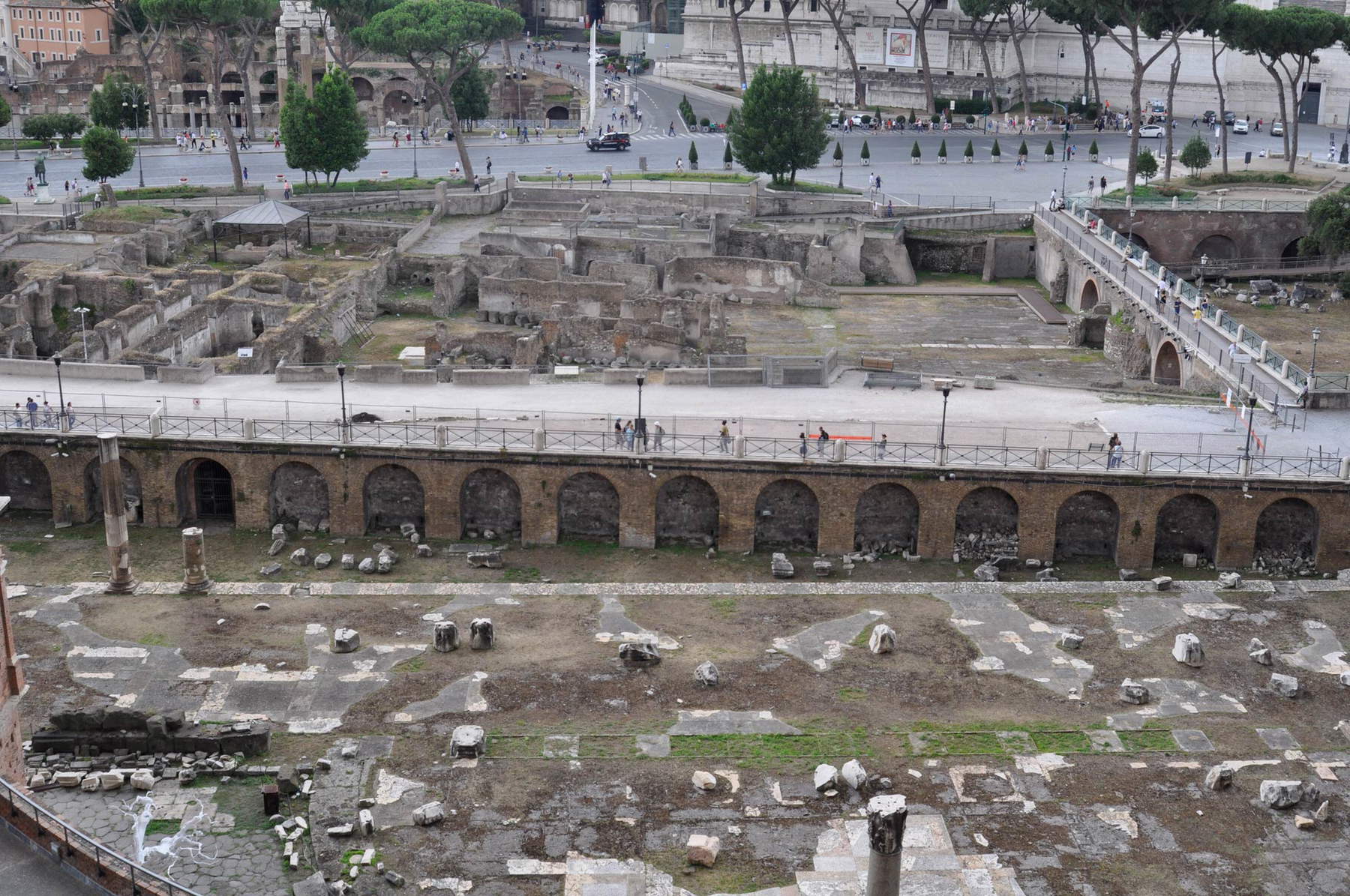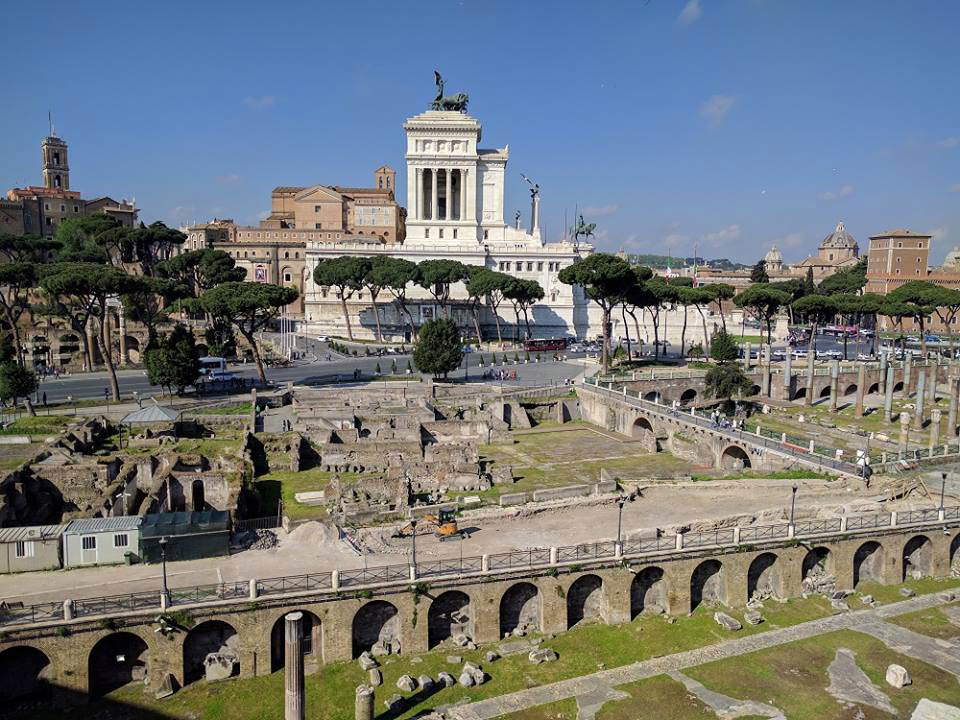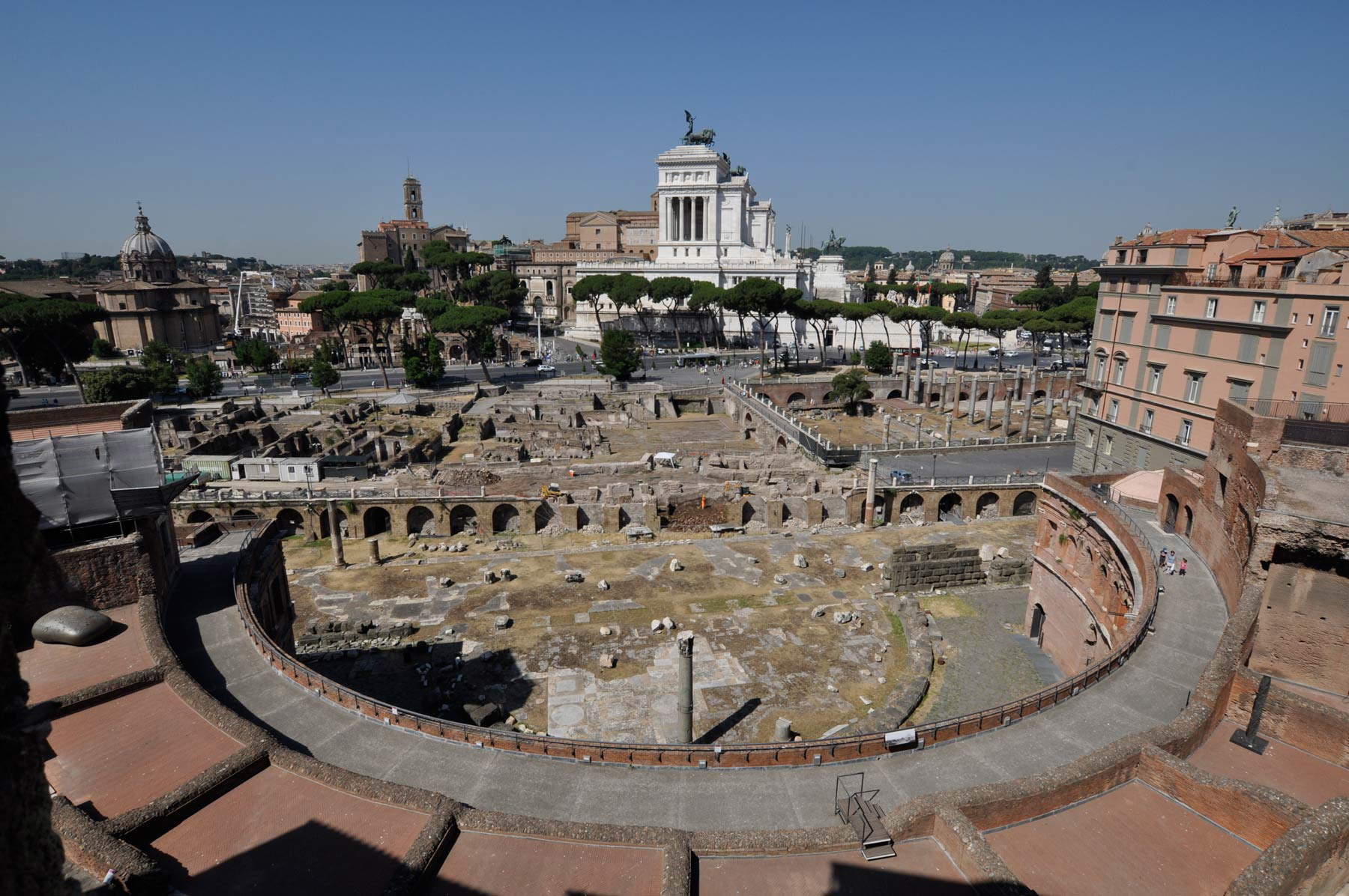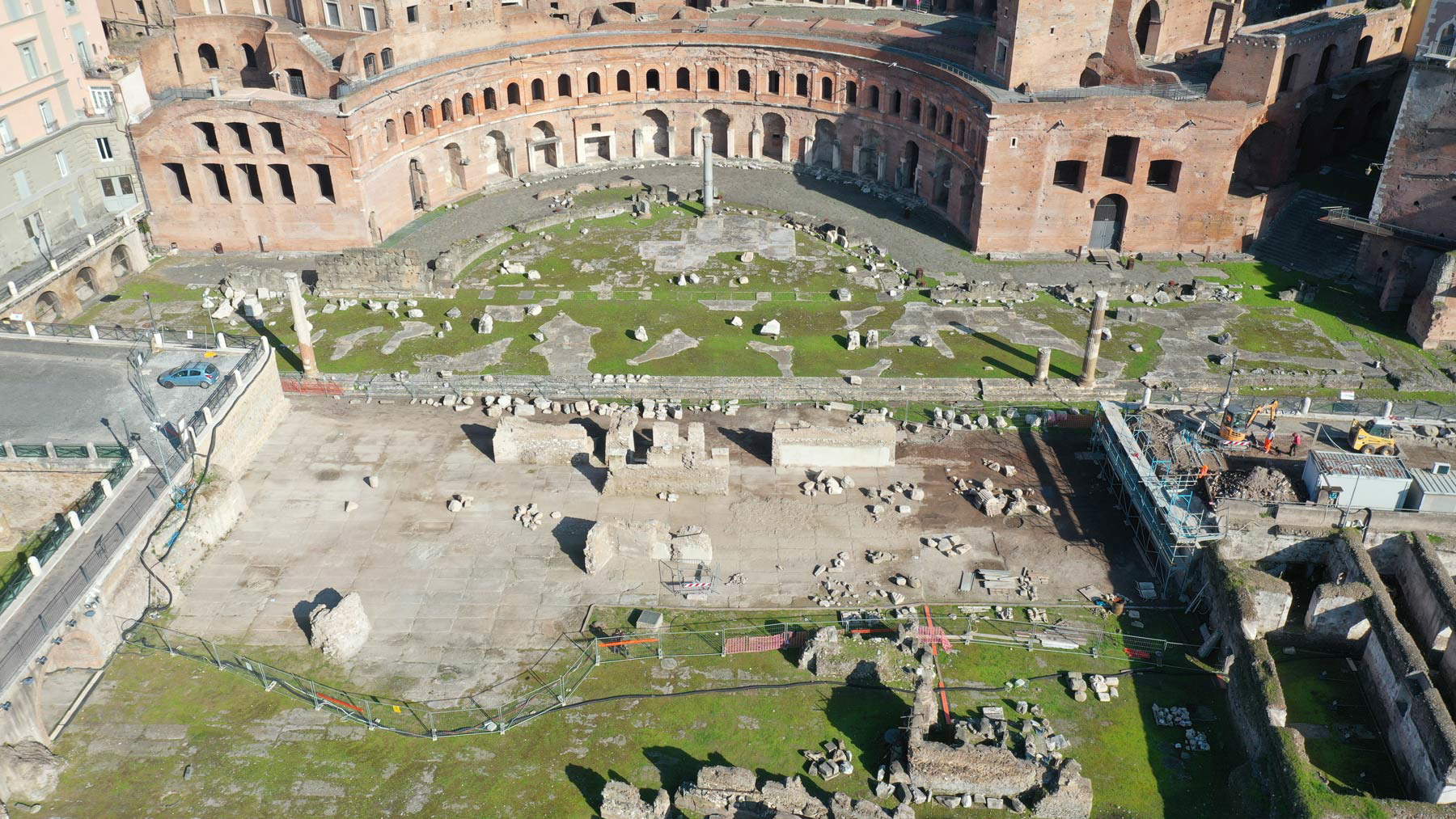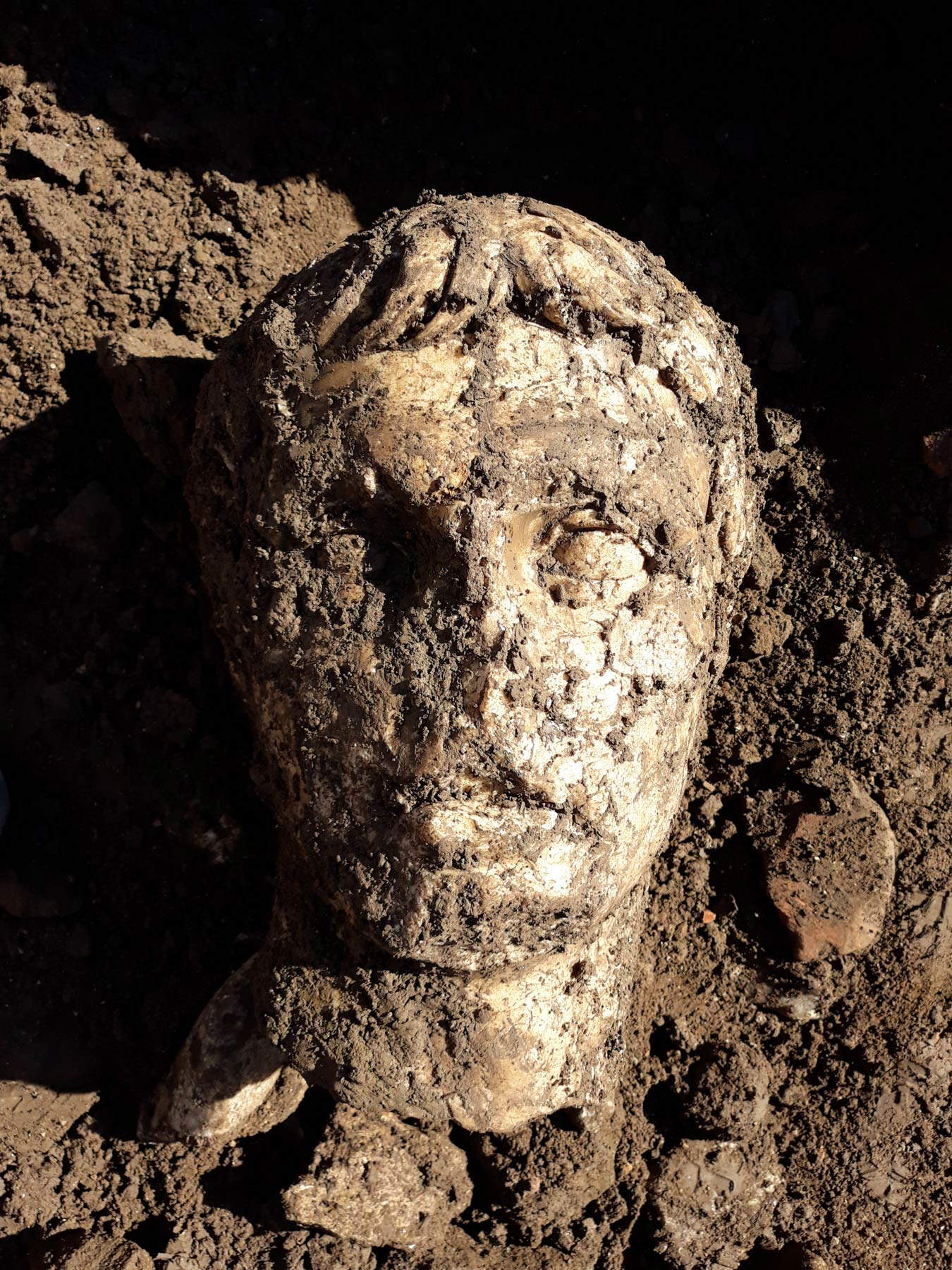by Redazione , published on 14/12/2020
Categories: Archaeology
/ Disclaimer
In Rome, the excavation of Via Alessandrina, which has unearthed a new portion of the Imperial Fora and led to findings described as exceptional by the Capitoline Superintendency, ends.
In Rome, the archaeological excav ation of Via Alessandrina has been concluded, and the archaeologists’ research has unearthed a new portion of the Imperial Forums, with some finds, such as an Imperial-era head identified with the god Dionysus and more than sixty fragments of the frieze of arms, which the Capitoline Superintendence calls “exceptional.” With the same adjective, the institute also defines the result of the excavation, thanks to which it is now possible to admire in a single glance the square of the Forum of Trajan with the monumental complex of the Markets of Trajan.
Thanks to the new excavation, which took place under the excavation direction of Roberto Meneghini and the scientific direction of Claudio Parisi Presicce, the northern section, about sixty meters long, of the Via Alessandrina, which connected the current square of the Forum of Trajan to Largo Corrado Ricci, was removed. The street constituted las main axis of the Alessandrino district, which was created in the late 16th century by the cardinal, nephew of Pope Pius V, Michele Bonelli known as lAlessandrino, so nicknamed because he was born in Bosco Marengo, near Alessandria. The road axis was laid out around 1570: it connected the urbanized area of the Forum of Trajan with the Basilica of Maxentius, which at that time was believed to be the Forum of Peace. Like Cardinal Nepote, Bonelli in fact promoted, during the 1680s, the reclamation of the entire vast area subject to swamping (hence the toponym of “Pantani”) between Trajan’s Column and the Velia, with the reactivation of the Cloaca Massima and then with the laying of a powerful interro that raised and equalized the level with respect to the stagnant waters.
The complete demolition of the district between 1924 and 1932 for the opening of the Via dell’Impero, today’s Via dei Fori Imperiali, deprived Via Alessandrina of its original residential fabric, and as a result the surviving route, crossing the Forums of Augustus, Nerva and Trajan, made it difficult to understand the remains of the ancient architectural complexes. The excavations investigated the layers related to the medieval abandonment and frequentation of the area: these layers yielded the most important marble architectural finds pertaining to the elevations of the forensic complexes. Starting in the medieval age they were progressively deconstructed and, at the end of the 10th century, the area of the ancient Forum of Trajan was gradually urbanized until it assumed, in the 13th century, the typical appearance of the late medieval residential neighborhoods, with the multi-story houses aligned in rows along the street axes that lived on until the area’s impalement and recovery thanks to the intervention of Cardinal Bonelli.
In order to make the ancient remains better legible, the decision matured to remove the ancient Via Alessandrina (in fact, today the surviving section of the road appears decontextualized from its original residential fabric, and divides the archaeological areas of the Forums of Augustus, Nerva and Trajan, making it difficult to understand): a decision accepted by the MiBACT-Roma Capitale Joint Commission, established in 2014, for the elaboration of a study for a Strategic Plan for the arrangement and development of the Central Archaeological Area of Rome. The Commission, accepting what had already been proposed in the 2008 Guidelines, emphasized the need to proceed with the visual and physical reunification of the monumental areas of the Forums of Trajan, Augustus and Nerva, with the consequent elimination of the Via Alessandrina road layout. The excavation of Via Alessandrina, after a preliminary campaign in 2016, took place continuously from March 2018 until last November under the scientific direction of archaeologists from the Superintendence. The intervention, of high scientific value, has allowed the acquisition of many significant data for the reconstruction of the history of the monumental center of the city of Rome, bringing to light a new portion of the square of the Forum of Trajan, as well as the remains of the dwellings of the medieval district, whose foundations rested directly on the square of the Forum of Trajan, now deprived of its original white marble slab pavement, whose impressions on the preparation mortar remain well evident.
As anticipated, the excavation also led to a series of relevant finds: a head from the imperial age and identified with the god Dionysus, found on May 24, 2019, intentionally reused in a late medieval wall as construction material, and a second head from the imperial age probably depicting Emperor Augustus in his youth, never shown to the public, found on September 27, 2019. In addition, the institutions wanted to show a selection of the more than sixty fragments of the Darmi frieze representing the warlike remains of the vanquished peoples and those of the victors, all laid to symbolize the achieved pax romana. The motif, known as the Fregio dArmi del Foro di Traiano, decorated marble panels flanked by statues of Dacian warriors that crowned the rich front of the Basilica Ulpia and, perhaps, the porticoes of the Forum of Trajan square. Also set up on this unique occasion is a fragment of a historical frieze, which preserves figurative representations in relief on the two opposing faces (pluteus), made of fine-grained white marble (Luni marble) and can be chronologically framed between the 1st and 2nd centuries AD. The most valuable finds are the subject of conservation interventions by the Capitoline Superintendence for Cultural Heritage with the support of the conservation area of Zètema Progetto Cultura. At the Museum of the Imperial Forums at the Markets of Trajan, in close connection with the site of discovery, sculptural and architectural artifacts that came to light during the excavation will be on permanent display.
Lopera was made possible by the Department of Cultural Growth of Roma Capitale, the Capitoline Superintendence for Cultural Heritage under a concession from the Ministry of Cultural Heritage and Activities and Tourism - Colosseum Archaeological Park. The excavations were carried out thanks to the act of patronage of the Republic ofAzerbaijan (which arrived thanks to the action of then Mayor Ignazio Marino, who not only worked to seek funding but also gave an important impetus to the start of the work: in 2013, Via Alessandrina was in abandonment and it was thanks to his interest that it was reopened to the public), for a total amount of 1,000,000.00 .
The Forum of Trajan is a masterpiece of Roman town planning whose grandeur was not fully grasped until now. Today, it is easier to understand why the building was called worthy of the admiration of the gods, declares Maria Vittoria Marini Clarelli, Capitoline Superintendent of Cultural Heritage.
“The intervention on Via Alessandrina, conducted by Roma Capitale,” says Alfonsina Russo, director of the Colosseum Archaeological Park, “is a project of particular importance, as it returns to public use the area of the Forum of Trajan in all its breadth and grandeur. The intervention represents a virtuous action, which is fully part of a system strategy fully shared by the Archaeological Park of the Colosseum and Roma Capitale and which is aimed at defining the opening of a unified path between the Imperial Forums and the Roman Forum - Palatine, for a barrier-free, finally unified fruition of the central archaeological area of Rome, to be made increasingly attractive and welcoming and able to involve the public in a fascinating cultural and emotional experience. A due nod, finally, to the work done by the Capitoline Superintendence, which has been able to combine, in an admirable way, the research and study of materials and contexts with the storytelling and presentation to the public.”
“LAzerbaijan, which is a multi-ethnic and multicultural country,” says Mammad Ahmadzada, Ambassador of the Republic of Azerbaijan, “has always been very attentive to the cultures of other peoples, and it is a duty for us to respect and protect the historical-architectural and cultural heritage in various countries of the world. The heritage of Rome belongs to humanity, and the Eternal City, the capital of Italy, the cradle of civilization, holds a special place in the heart of my country. In 2014, during President Ilham Aliyev’s official visit to Italy, an agreement was signed between the Municipality of Rome and the Ministry of Culture and Tourism of the Republic of Azerbaijan to support the archaeological excavation and enhancement work in the area of the Fori Imperialivia Alessandrina. It made us really happy that this archaeological excavation, went beyond its goal, leading to the discovery of a number of very important artifacts, the display of which, in February this year, President Ilham Aliyev, on a state visit to Italy, viewed in the Julius Caesar Hall, hosted in the Capitol by Mayor Virginia Raggi. We are ready for the evaluation of new opportunities for cooperation. Within the Azerbaijan-Italy strategic partnership, the city of Rome must continue to play a privileged role.”
Below are some pictures of the work before and after.
 |
| Via Alessandrina before the excavation |
 |
| Via Alessandrina before the excavation |
 |
| Aerial view during demolition work in 1932 |
 |
| Beginning of work |
 |
| Beginning of work |
 |
| View from the Markets of Trajan during the works |
 |
| The Forum of Trajan at the end of the works |
 |
| The Forum of Trajan at the end of the works |
 |
| The discovery of the head of Dionysus |
 |
| The head of Dionysus after cleaning operations |
 |
| The finding of the head of Augustus |
 |
| The head of Augustus after the cleaning operations |
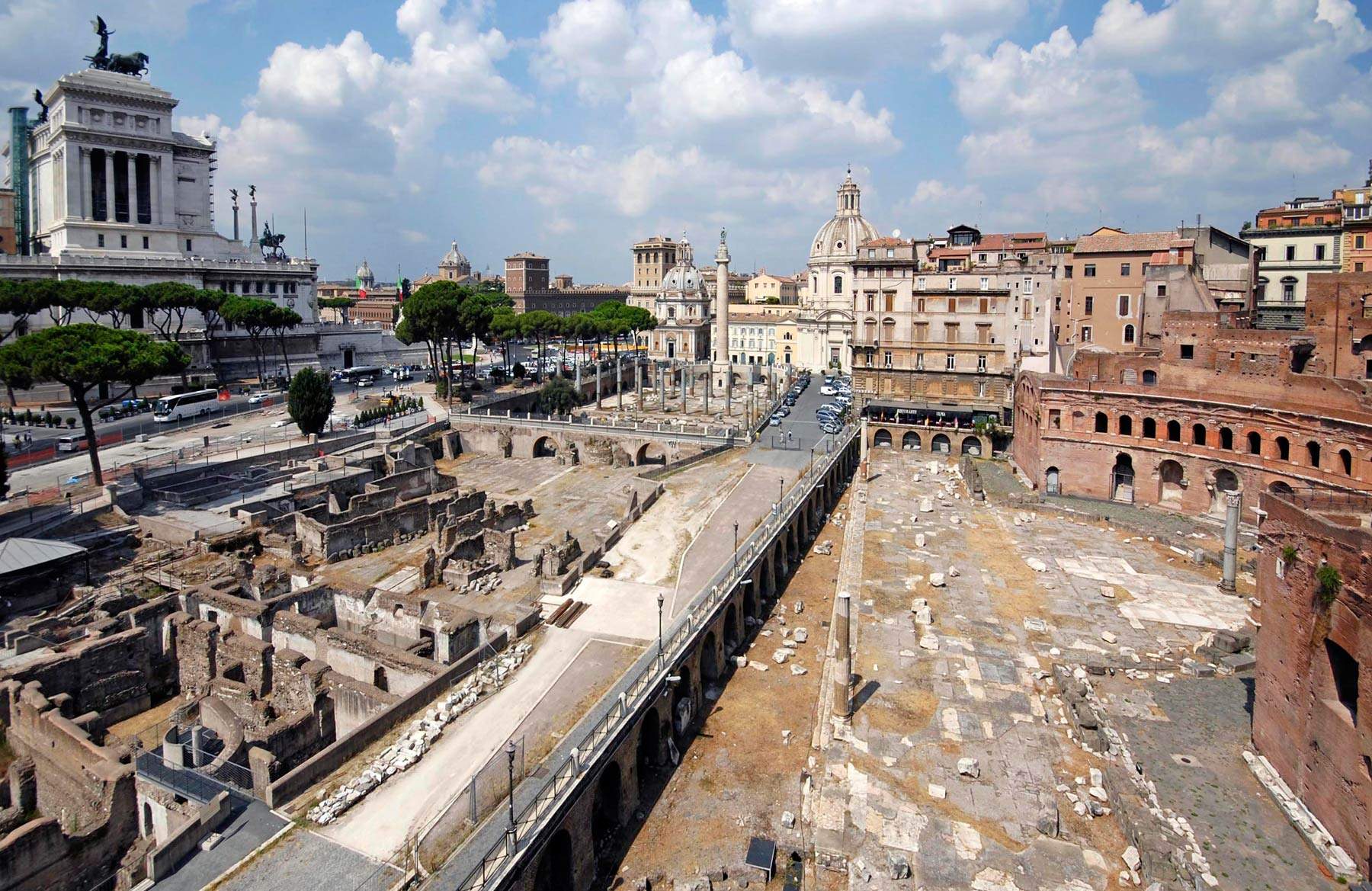 |
| Rome, a new portion of the Imperial Fora emerges, with important discoveries |
Warning: the translation into English of the original Italian article was created using automatic tools.
We undertake to review all articles, but we do not guarantee the total absence of inaccuracies in the translation due to the program. You can
find the original by clicking on the ITA button. If you find any mistake,please contact us.

